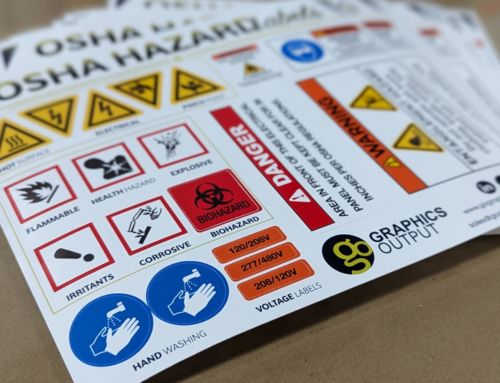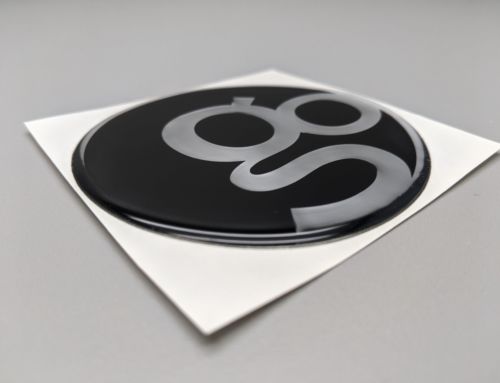Surprising to many, a “mil” varies greatly from a “millimeter.” In addition to sounding nearly identical, both measure the thicknesses of materials in the manufacturing industry. But when talking about decals, the unit “mil” is much more common, equivalent to one-thousandth of an inch, or 0.001 inch. A millimeter is almost 40 times thicker than that, or approximately 0.0394 inch. So despite the similar sounding names, confusing the two is worse than mixing up thin crust and deep dish pizza.

What measurement term for which material?
Different types of materials usually have a standard unit of measurement across all suppliers. Here’s the de facto list outlining when to use which measurement, covering mils, millimeters, and more.
PSA Backed Films: Mils
Pressure-sensitive adhesive-backed films like vinyl and polyester, along with transfer adhesives, are measured in mils.
Rigid Sheet Graphic Films: Mils
Polycarbonate, polyester, rigid PVC, and aluminum all use mils for thickness callouts.
POP/POS Signage Flatstock: Millimeters
The thickness of signage materials including expanded PVC (aka Celtec or Sintra), Gatorfoam, and Maxmetal are all measured in millimeters.
Paper: Caliper points (not type points!)
Heavyweight paper and cardstock thicknesses are measured in caliper points. Note that caliper points are not the same as font or type points, which measure the font height. To make matters more confusing, 1 caliper point represents 1/1,000 inch, the exact same thickness as a mil. (If you’re curious, a font point is 1/72 inch.)
Banner Material: Weight in ounces
Banner vinyl thickness is measured by the weight of 1 square yard of material. For example, 13 oz vinyl weighs 13 ounces per square yard. The higher the number, the heavier (and thicker) the vinyl.
Common Thicknesses of Graphic Substrates
| Vinyl (calendared) | 3-4 mils, or 0.003-0.004 inch |
| Vinyl (cast) | 2 mils, or 0.002 inch |
| Polyester (pressure-sensitive film) | 2 mils, or 0.002 inch |
| Polycarbonate/Polyester (rigid, non-adhesive film) | 5-30 mils, or 0.005-0.03 inch |
| Expanded PVC signage | 3-6 mm, or about 0.118- 0.236 inch |

Does material thickness matter?
Yes and no. Honestly, don’t read too much into thicknesses for decals. Standards are standards for a reason, and a label’s other properties play a much larger role in determining its durability.
Instead, first prioritize other factors: Select polyester for its high-temperature ratings and chemical resistance. Use cast vinyl for its outdoor durability against shrinkage and, in most cases, its ability to conform to complex curves. Super thick laminated vinyl with adhesive made to stick to plastic was developed specifically for motocross bikes and ATVs that often get scraped in crashes. Thicker signs will be more rigid and durable, but also heavier. So if signs will be hanging, opt for the thinner, lighter option.
In short, once you select the best material and desired usage, then consider thickness.
Still not down with the thickness? Email sales@gographicsoutput.com or give us a call at (260) 748-0577 when determining the material thickness for your next project. We’d be happy to talk you through it.




